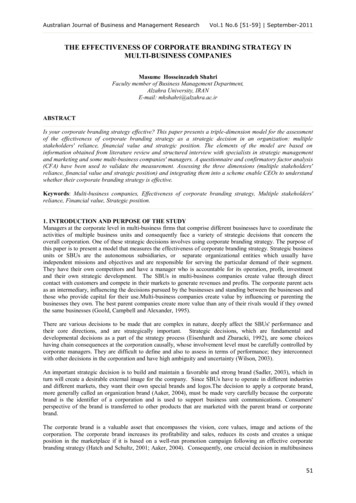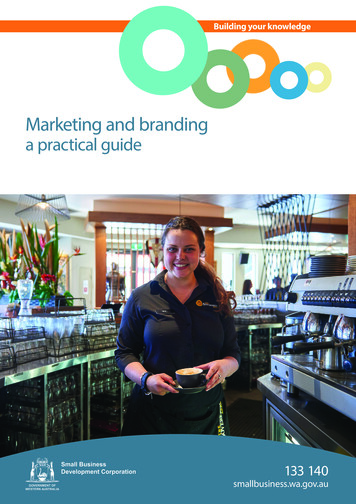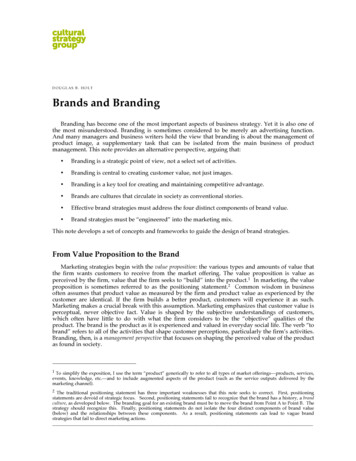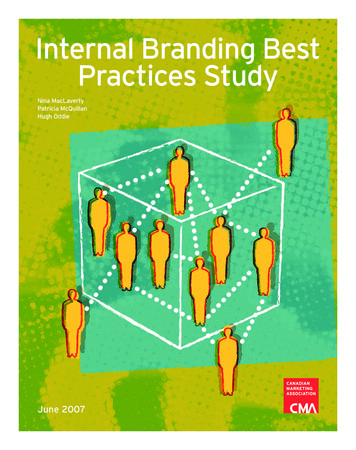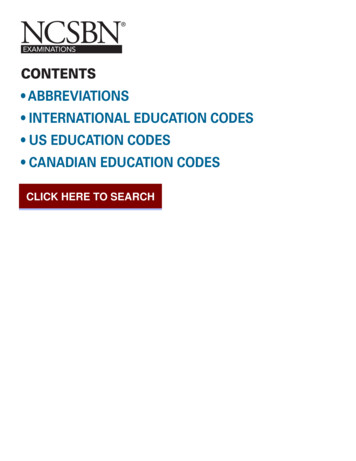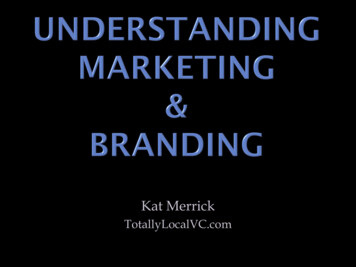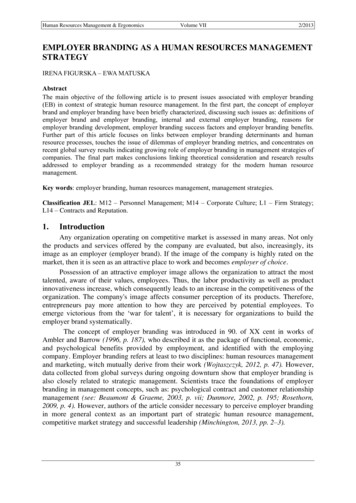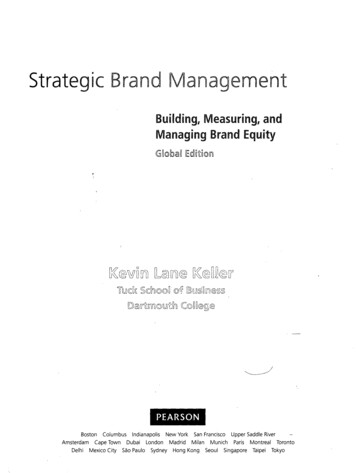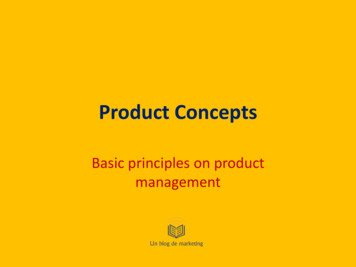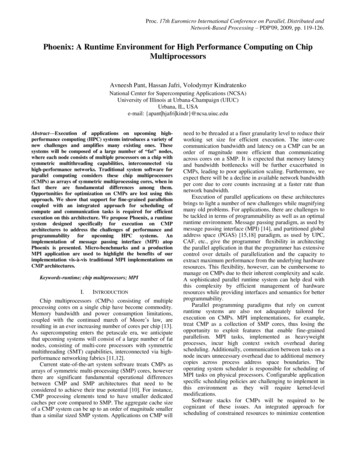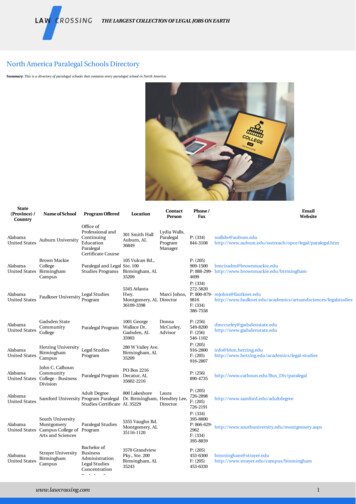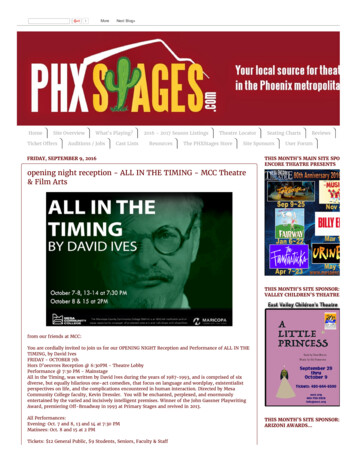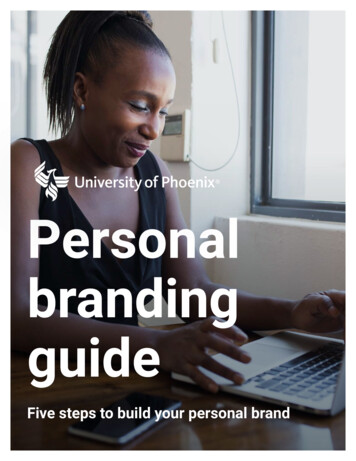
Transcription
PersonalbrandingguideFive steps to build your personal brand1
Your personal brand is a combination of your reputationand the value you bring to the workplace. In a competitivejob market, it’s important to be intentional about creatinga personal brand that clearly communicates who you areand what you have to offer.In this guide.YOU’LL LEARN FIVE STEPS FOR BUILDING YOUR PERSONAL BRAND12345Identify your attributesDefine your goalsCurate an audienceTell your storyPromote yourself2
1Identify your attributesPOINTING OUT WHAT MAKES YOU GREATYour personal brand sits at the intersection of what youthink about yourself and what others think about you.Here are a few ways to dig deeper and uncover your corebrand attributes:Pick five qualities that describe youList a few characteristics that describe whoyou are. Are you adventurous? Creative? Reliable?Wise? If you don’t know where to start, think aboutsome compliments you’ve received from teachers,mentors or other leaders.Think about the bigger pictureWhat would you do if you had unlimited time andresources, and knew you couldn’t fail? Your personalbrand does more than help you land your next job;it’s your north star for who you hope to becomedown the road.Follow your leadersPick three to five people who inspire you the most.Why do you admire them? Even if you don’t havemuch in common, pinpointing what you value inothers can help you begin cultivating those samevalues for yourself.TIPIf you’re struggling with identifying your ownattributes, reach out to a friend or trusted colleagueto ask how they would describe you.3
2Define your goalsWHAT DOES SUCCESS LOOK LIKE TO YOU?Defining your goals starts with one question: What do youreally want? Thinking broadly about what you want fromyour career will help you develop a brand that aims to achievethose goals. Here are some questions to consider:What do Iwant more of?Are you looking for more flexibility?A bigger purpose? A higher salary?What am Imissing?What’s currently lacking from yourcurrent position that you’d like to have?Whom do I needto connect with?What relationships do you need tobuild to be on track to meet your goals?Who can help you take the next step?Answering these questions can sometimes feel like you’reshooting for the moon. Remember, these goals don’t needto have a timeline attached to them; they’re designed as aguide for developing your personal brand and helping youget what you want out of your career.
3Curate an audienceHOW TO ATTRACT THE RIGHT PEOPLEYour personal brand is designed to attract the right peopleto your door, but figuring out who those people are andwhat’s important to them can be overwhelming. Here aresome simple ways to identify your target audience:What do you want?Where do you want to live? What industry doyou want to work in? What companies are there?What kind of work do you want to do? Settingparameters for yourself will help you narrow thefocus for finding your target audience.What do they want?Researching what your target audience is likeand what their needs are will help you learn tospeak their language. Reach out to people in theroles you’re interested in to understand whatit’s really like. You can tap into your existingnetwork or attend networking events throughwebsites like Meetup or Eventbrite.Where do you fit in?Put yourself in the shoes of your target audience.What challenges are you facing? How is thatimpacting business? Throughout your researchand conversations, think about what value youcan add to help solve some of their problems.TIPNarrow your focus by researching companies andindustries through Vault. Just log in to PhoenixLinkand click on Careers Jobs & Internships Vault(new window).5
4Tell your storyCRAFTING YOUR MISSION STATEMENTOnce you know what’s important to your target audience,you need to communicate the value you bring to the table.Here’s a simple framework for creating your personalbrand’s mission statement:“I help [target audience] do/understand[what] so they can [desired outcome].”Here are two examples to get you started:““Career coachI help people who typically have 15-20 yearsof work experience transition to industries orroles that differ from their background so theycan find work they love, they’re good at andpays what they deserve.”FundraiserI’m interested in connecting nonprofitorganizations to high-net-worth donors so they canraise enough money to cover operating expensesand continue to support causes they care about.”TIPYour statement should be backed up withexperience, education or specific success storiesfound in your resumé, cover letter or LinkedInprofile to help paint the larger picture of yourpersonal brand.6
5Promote yourselfHOW TO PUT YOURSELF OUT THEREOnce you’ve defined your brand and found your audience,it’s time to promote yourself. Here are some ways to putyour best brand forward:See where you stand onlineDo a quick Google search of yourself and evaluate whereyou stand online. If what rises to the surface is inconsistentwith how you want to be perceived, don’t worry. It cantake time to develop an online reputation that accuratelyreflects your personal brand. If you’re worried your onlinepresence could negatively impact your career goals,consider hiring a reputation manager.Develop a promotion strategyOnce you know where your current brand stands,you can start implementing ways to promote your newpersonal brand. Here are a few ways to get started: Completing your LinkedIn profile Building and sharing your personal website Participating and networking at key industry conferencesStill need help?OUR CONTINUED COMMITMENT TO CAREER SERVICES FOR LIFE At University of Phoenix, our commitment to you doesn’t end atgraduation. Whether you’re actively pursuing a degree with usor graduated long ago, you’ll have access to career advisors andresources — from your first class to your last job.You’ll get access to personal career coaching, including jobsearch planning, resumé fine-tuning, interview prepping and more.See all of your options at phoenix.edu/career-services.7
Career coach “ I help . people who typically have 15-20 years . experience, education or specific success stories found in your resumé, cover letter or LinkedIn . Do a quick Google search of yourself and evaluate where you stand online. If what rises to the surface is inconsiste
